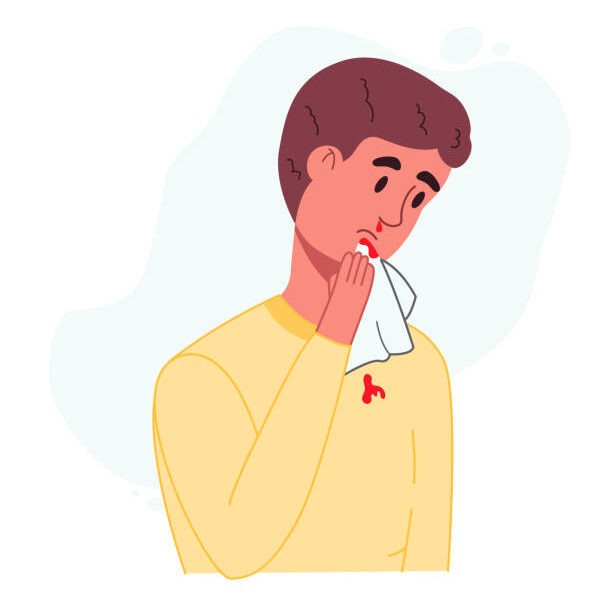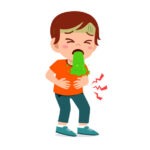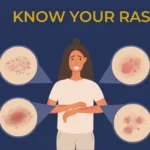Nosebleeds are a common occurrence that can affect anyone at any age. They are usually harmless and easy to stop, but sometimes they can be a sign of a more serious problem. In this blog post, we will explore some of the most common causes, symptoms, and treatment options for nosebleeds.
What are nosebleeds?
Nosebleeds, also known as epistaxis, are episodes of bleeding from the nose. The nose contains many small blood vessels that are close to the surface and can easily rupture or leak blood. Most nosebleeds occur in the front part of the nose (anterior nosebleeds), where the blood vessels are more fragile and exposed. Less commonly, nosebleeds occur in the back part of the nose (posterior nosebleeds), where the blood vessels are larger and deeper.
What are the symptoms of nosebleeds?
The main symptom of a nosebleed is blood dripping or flowing from one or both nostrils. The blood may also run down the back of the throat or into the mouth. Other symptoms may include:
• A feeling of pressure or fullness in the nose or face.
• A headache or dizziness.
• A fast or irregular heartbeat.
• Difficulty breathing or swallowing.
• Pale or clammy skin.
The severity and duration of a nosebleed may vary depending on the cause and location of the bleeding. Anterior nosebleeds are usually mild and last for a few minutes. Posterior nosebleeds are usually more severe and last for longer periods of time.
What causes nosebleeds?
There are many possible causes of nosebleeds, but some of the most common ones include:
• Dry air: Dry air can irritate and dry out the lining of the nose, causing it to crack and bleed. Dry air is more common in cold weather, low humidity, or indoor heating systems.
• Trauma: Trauma can injure the blood vessels in the nose and cause them to bleed. Trauma can result from accidents, falls, sports injuries, fights, or picking or scratching the nose.
• Allergies: Allergies can cause inflammation and congestion in the nasal passages, making them more prone to bleeding. Allergies can also trigger sneezing, which can increase the pressure in the nose and rupture the blood vessels.
• Infections: Infections can cause inflammation and irritation in the nasal passages, as well as fever and increased blood flow to the area. Infections can be viral (such as colds or flu), bacterial (such as sinusitis or strep throat), or fungal (such as candidiasis or aspergillosis).
• Medications: Medications can affect the blood’s ability to clot or thin out the lining of the nose. Some medications that can cause nosebleeds include anticoagulants (such as warfarin or heparin), antiplatelets (such as aspirin or clopidogrel), nonsteroidal anti-inflammatory drugs (NSAIDs) (such as ibuprofen or naproxen), nasal sprays (such as decongestants or steroids), antihistamines (such as diphenhydramine or loratadine), and chemotherapy drugs.
• Blood disorders: Blood disorders can impair the blood’s ability to clot or increase its tendency to bleed. Some blood disorders that can cause nosebleeds include hemophilia (a genetic condition that prevents blood from clotting properly), von Willebrand disease (a genetic condition that affects platelet function), leukemia (a cancer of blood cells), thrombocytopenia (a low platelet count), anemia (a low red blood cell count), and polycythemia vera (a high red blood cell count).
• Tumors: Tumors can grow in or near the nasal passages and press on or erode the blood vessels. Tumors can be benign (noncancerous) or malignant (cancerous). Some tumors that can cause nosebleeds include nasal polyps (growths on the lining of the nose), angiofibromas (benign tumors of blood vessels), nasopharyngeal carcinoma (cancer of the upper part of the throat behind the nose), and sinonasal carcinoma (cancer of the sinuses and nose).
How are nosebleeds diagnosed?
To diagnose a nosebleed, a healthcare provider will usually ask about the history and characteristics of the bleeding.
They may ask questions such as:
How often do you have nosebleeds?
How long do they last?
How much blood do you lose?
Which nostril bleeds?
Do you have any other symptoms?
Do you have any medical conditions?
Do you take any medications?
Do you have any allergies?
Have you had any recent injuries?
or surgeries?
Do you smoke?
or drink alcohol?
Then, your healthcare provider will perform a physical examination to look for signs of injury, infection, inflammation, or tumor in the nose or nearby areas. They may also use a device called a nasal speculum to widen your nostrils and look inside your nasal passages with a lighted instrument called an endoscope. Depending on the suspected cause of the bleeding, your healthcare provider may order some tests to confirm the diagnosis or rule out other causes. These tests may include: Blood tests: These are tests that measure levels of blood cells, antibodies, enzymes, hormones, or other substances that may indicate infection, disease, or bleeding disorder. Urine tests: These are tests that measure levels of chemicals or microorganisms in urine that may indicate infection, disease, or bleeding disorder. X-rays: These are images that use radiation to show the structure and condition of bones and sinuses. Computed tomography (CT) scans: These are images that use X-rays and computer technology to show detailed views of soft tissues such as blood vessels, nerves, and tumors. Magnetic resonance imaging (MRI) scans: These are images that use magnets and radio waves to show detailed views of soft tissues such as blood vessels, nerves, and tumors.
How are nosebleeds treated?
The treatment of nosebleeds depends on the type and severity of the bleeding. Some general treatment options include:
Self-care: This involves taking steps to stop the bleeding and prevent further irritation or infection of the nose. Some self-care measures include: Sitting upright and leaning slightly forward to prevent blood from flowing down your throat. Pinching your nostrils together with your thumb and index finger for 10 to 15 minutes until the bleeding stops. Applying an ice pack wrapped in a cloth to the cheek or bridge of your nose to constrict the blood vessels and reduce bleeding. Avoiding blowing your nose, sneezing, picking your nose, or inserting anything into your nostrils for at least 24 hours after the bleeding stops. Using a saline nasal spray, gel, or ointment to moisten and soothe your nasal passages. Using a humidifier or vaporizer to add moisture to the air in your home or workplace. Medications: These are drugs that help treat infection, inflammation, or bleeding disorder that may cause or worsen nosebleeds. Some medications include: Antibiotics to treat bacterial infections. Antifungals to treat fungal infections. Antivirals to treat viral infections. Corticosteroids to reduce inflammation and swelling. Antihistamines to relieve allergy symptoms such as congestion and sneezing. Decongestants to shrink swollen blood vessels and tissues in your nasal passages. Anticoagulants or antiplatelets to prevent blood clots if you have a history of stroke or heart attack. Vitamin K supplements to help your blood clot if you have a vitamin K deficiency. Nasal packing: This is a procedure that involves inserting gauze, sponges, balloons, or tampons into your nasal cavity to put pressure on the source of the bleed. Nasal packing can help stop anterior or posterior nosebleeds that do not respond to self-care measures. Nasal packing may be left in place for a few hours to a few days depending on the type and severity of the bleeding. Nasal packing may cause discomfort or difficulty breathing and may increase the risk of infection or sinusitis (inflammation of the sinuses). You may need antibiotics or painkillers to prevent complications or relieve symptoms while having nasal packing. Cauterization: This is a procedure that involves sealing off the bleeding vessel with heat or chemicals. Cauterization can help stop anterior or posterior nosebleeds that do not respond to self-care measures or nasal packing. Cauterization may be done with an electric current (electrocautery) or silver nitrate sticks.



